In the woodworking industry, an edgebander machine plays a crucial role in creating beautiful, professional-grade finishes on furniture and wood-based products. But what exactly is an edgebander machine, and how does it contribute to the woodworking process? This article will explore all aspects of edgebanding and how edgebander machines are used to achieve a polished, complete finish on materials such as cabinets, boards, and solid wood furniture.
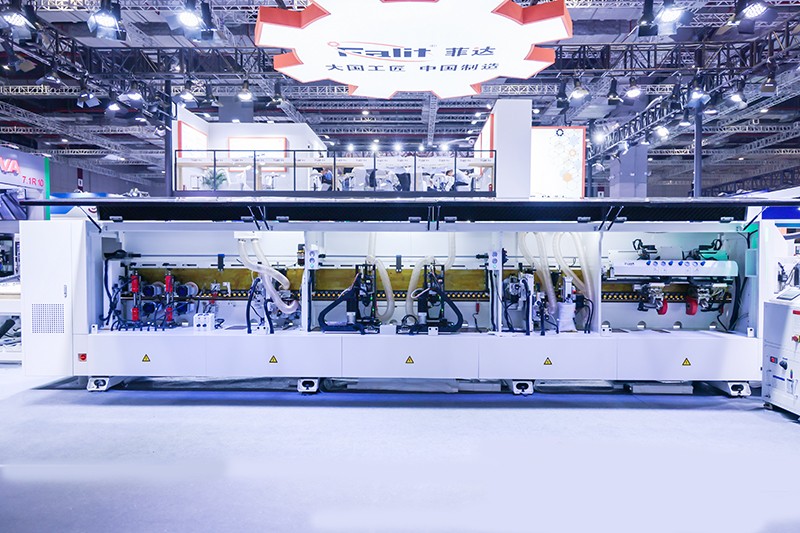
Edgebanding refers to the process of applying a thin strip of material to cover the exposed edges of wood-based panels, such as MDF, plywood, or particle board. These exposed edges can be rough and visually unappealing, making edgebanding an important aspect of the finishing process for any woodworking project. The goal is to create a clean and finished appearance that matches the flat surfaces of the wood panel.
Edge banding is primarily used in furniture manufacturing, such as cabinet making and shelving units, where both functionality and aesthetic value are essential. It not only enhances the appearance but also protects the edges from moisture, wear, and other potential damages. The edge banding can be made from various materials including solid wood, PVC, ABS, veneer, or melamine, depending on the desired look and durability requirements.
A typical edgebander machine helps in automating the entire edge banding process, ensuring efficiency and accuracy. This machine is often an integral part of large furniture manufacturing lines, significantly reducing labor and time costs.
The edgebander machine is a sophisticated piece of equipment composed of several different units, each serving a specific function in the edge banding process:
Feeding Unit: This component feeds the panel through the machine.
Gluing Station: Applies adhesive to the edge of the board to bond the edge banding material securely.
Trimming Unit: Cuts excess edge banding material, ensuring a neat finish.
Buffing Unit: Polishes the edge to create a smooth, finished look.
End Cutting Unit: Cuts the overhanging edge banding at both ends of the board.
These components work together to make the edge banding process automatic, efficient, and accurate. Whether working on solid wood edges or veneer, the edgebander machine handles the entire process without manual intervention.
| Component | Function |
|---|---|
| Feeding Unit | Feeds the panel into the machine. |
| Gluing Station | Applies glue to edge of the board. |
| Trimming Unit | Cuts excess material. |
| Buffing Unit | Polishes the edge for a clean finish. |
| End Cutting Unit | Cuts overhanging material. |
Each of these components plays a critical role in ensuring that the final product is well-finished and professional-looking. Automatic edgebanders are particularly useful in industrial settings, where consistency and speed are priorities.
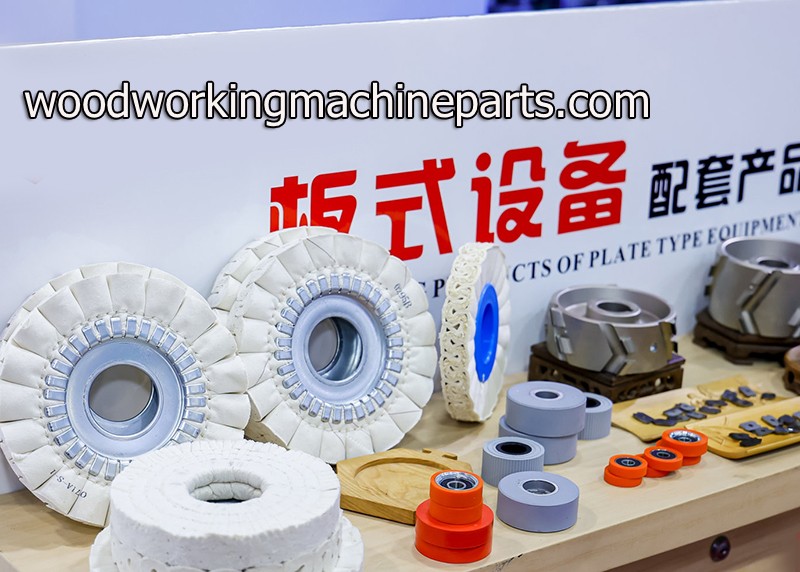
Edgebander machines come in various types, suited to different scales of operations and requirements. Here, we explore a few major categories:
Manual edgebanders require a greater degree of operator involvement. The operator guides the panel through the machine, ensuring that the edge banding material adheres properly. These machines are suitable for smaller workshops or for tasks that do not require high volumes of production.
Semi-automatic edgebanders offer some degree of automation, reducing the physical labor required by the operator. The panel may need manual feeding, but other operations like trimming and buffing are handled by the machine. They are a cost-effective solution for small to medium-scale businesses.
Fully automatic edgebanding machines are ideal for large-scale manufacturers and companies involved in high-volume production. These machines handle everything from feeding the panel to gluing, trimming, buffing, and polishing. The automation provided by these machines results in increased productivity, reduced errors, and consistent quality.
Hot Air Edgebanders: These machines use hot air to activate a special adhesive on the edge banding material, making it bond with the edge of the board.
Laser Edgebanders: Instead of hot air, laser technology is used to melt the adhesive, ensuring an even stronger bond.
While laser edgebanders are more expensive, they produce a seamless finish that is highly sought after in premium woodworking products.
An important aspect of edge banding is the choice of glue. The gluing station of the edgebander plays a critical role, as it determines the strength and quality of the bond. Some common types of glue used in edge banding include:
EVA Glue: Ethylene Vinyl Acetate (EVA) is a popular adhesive for edge banding because of its low cost and versatility. It works well for most edge banding materials.
PUR Glue: Polyurethane Reactive (PUR) glue is more expensive than EVA, but it offers superior water and heat resistance. PUR glue is preferred for applications involving high-moisture environments.
Glue application is a critical part of the edgebanding process, and the gluing station of the edgebander machine ensures that glue is applied consistently to create a strong bond between the edge banding material and the wood panel.
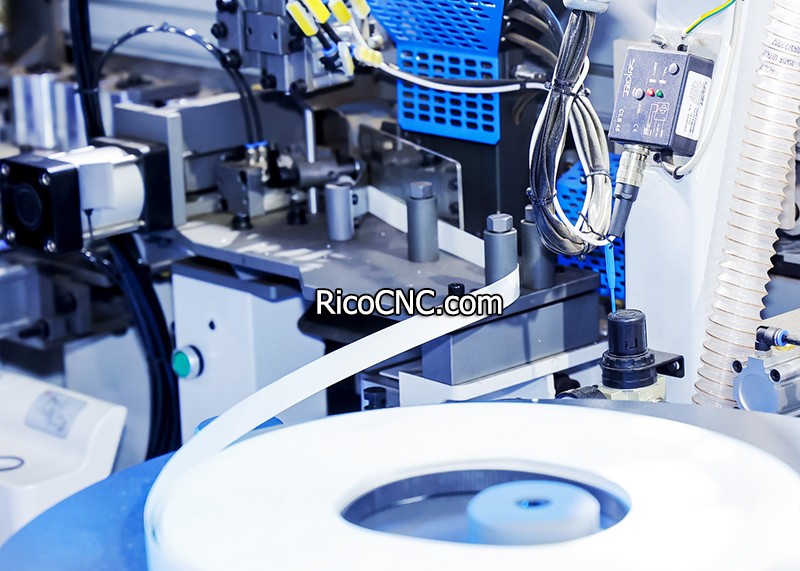
Manual edge banding involves applying glue manually to the edge of the wood and adhering the edge band manually. This process can be labor-intensive, time-consuming, and prone to human error.
On the other hand, automatic edge banding machines provide consistency, efficiency, and superior quality, especially for businesses involved in producing cabinetry or other large furniture pieces. Here are some advantages of automatic edgebanders over manual methods:
Time Efficiency: Automatic machines drastically reduce the time required to complete the edge banding process.
Quality Consistency: Machine application ensures that glue and edging are applied consistently.
Reduced Waste: Automation reduces material wastage, which can save costs in large-scale production.
Using an edgebander machine offers numerous benefits to woodworking professionals. Here are some key advantages:
Edge banding helps protect the exposed edges of furniture or board products, making them more resistant to damage from moisture, wear, and tear. A well-banded edge contributes to the durability and lifespan of the product.
A cleanly applied edge band makes the product more aesthetically pleasing. Edge banding creates a seamless appearance that blends with the surface of the material, resulting in a professional-grade finish.
Rough or exposed edges on furniture can pose safety hazards, such as cuts and splinters. By covering these edges with an edge band, the risk of injury is significantly reduced, enhancing safety, especially for furniture used in homes and schools.
In industries like cabinet making, where high-volume production is essential, edgebanders increase efficiency by automating the edge banding process. This allows manufacturers to produce larger quantities of finished products in a shorter amount of time.
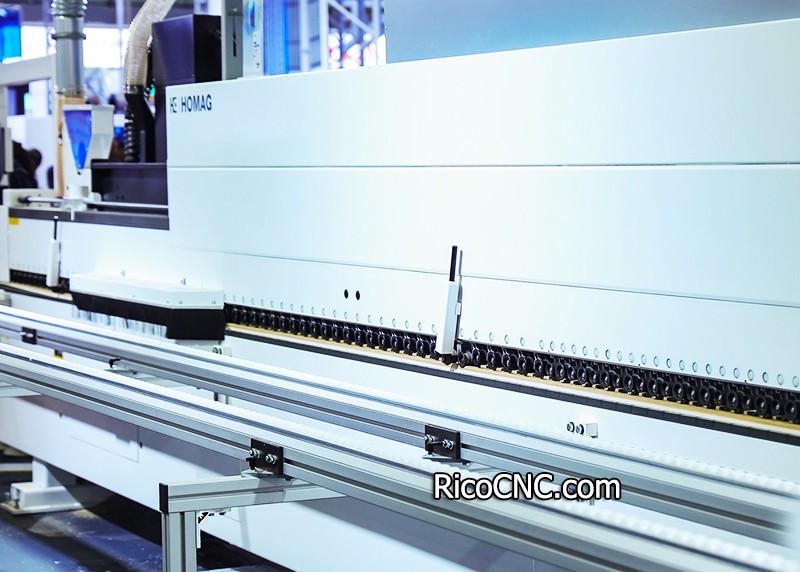
Edgebander machines are used in a variety of applications within the woodworking industry, including:
Cabinet Manufacturing: Cabinets are made from wood panels that require edge banding for durability and visual appeal.
Shelving Units: Edgebanding helps in making sturdy and attractive shelves.
Office Furniture: Furniture used in offices, such as desks and tables, are often made from particle boards with edge banding to improve their look and feel.
The use of edgebanders is not limited to wood; they can also be used on boards made from composite materials like MDF and plywood.
Selecting the right edgebander machine depends on several factors, including:
Production Volume: If you are a small workshop, a manual edgebander may be sufficient. For large-scale production, fully automatic machines are more efficient.
Edge Banding Material: The material used for edge banding also plays a role in the choice of the machine. Some machines handle plastic edges better, while others excel in applying solid wood edges.
Budget: Automatic edgebanding machines are more expensive than manual ones, but they provide increased efficiency and lower labor costs.
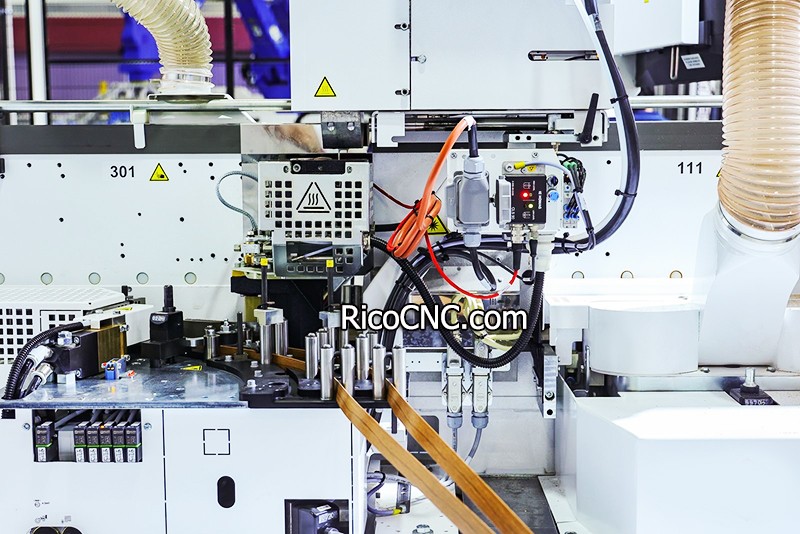
In the world of woodworking, an edgebander machine is a powerful tool that enhances the durability, safety, and aesthetic appeal of finished wood-based products. From protecting edges against moisture to providing a smooth, polished appearance, edge banding is essential for producing professional-grade cabinetry and furniture. With options ranging from manual to fully automatic edgebanders, businesses can choose the right equipment to suit their production needs.
Whether you're a small woodworking shop or a large-scale furniture manufacturer, investing in an edgebander machine can significantly improve the quality of your products and streamline your production process. If you're interested in learning more about how an edgebander can benefit your workshop or are ready to make an investment in one, contact us today for more information.
Contact: RicoCNC
Phone: 0086-13390848665
E-mail: cncsale@ricocnc.com
Whatsapp:0086-15264185266
Add: NO. 60, Weixin Road, Industrial Park, Suzhou, Jiangsu, China, 215000
We chat
